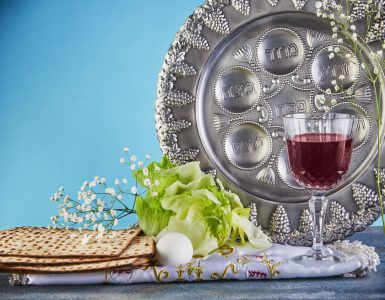Cadaveric Bone Grafts & Dental Implants
Dental implants have become an accepted and common alternative to dentures for the replacement of decayed or damaged teeth. The implants are replacement tooth roots, typically made of titanium, that are inserted into the jawbone and fuse with the existing bone to provide strong support for the replacement teeth. This requires that the jawbone is strong, thick, and dense enough to hold the implant(s) properly. Panoramic X-rays or CT scans are used to assess the health of the jawbone and determine whether it is suitable for implants.
Sometimes scans reveal erosion or deficiencies of the jawbone, due to infection, radiation, or traumatic injury to the area. This precludes the insertion of dental implants unless a bone graft is performed. To perform the bone graft, the jawbone is exposed surgically and disinfected, and the defect is filled with a substance comprised of either the patient’s own bone (autograft) or, more commonly, bones of dead people (or animals). Finally, the gums are sutured and then the jaw must be allowed to heal for a number of months before the dental implant can be performed.
HaGaon Rav Asher Weiss Shlit”a (Minchas Asher 2:71) was asked by several dentists whether it is permissible to perform a bone graft using bone harvested from cadavers. They explained that this is the most common method and that the bones are crushed to the size of granules of table salt.
Rav Asher considered the question from three perspectives:
- The prohibition to derive benefit from the dead
- The obligation to bury every part of a dead body
- The Issur of Tumas Kohanim – would a Kohen be permitted to receive a cadaveric bone graft?
We will briefly discuss the first two issues and then examine the third one thoroughly.
The Prohibition to Derive Benefit from the Dead
Rav Asher cites a Machlokes Rishonim as to whether the Issur Hana’a applies to
non-Jewish bodies. Tosfos (Bava Kama 10a) hold that it does not,
but the Rashba (Shu”t 1:365) holds that the prohibition applies to non-Jewish
cadavers as well. The Shach (Nekudos haKesef Y.D. 349:1) rules like Tosfos but the Shulchan Aruch (ibid.)
rules like the Rashba. The Pischei Teshuva (ibid.) cites Acharonim
who contend that deriving benefit from a dead body of a Jew is Assur mi’d’Oraisa but from a Nachri it is Asur mi’d’Rabbanan (and there is therefore room be lenient for a
sick person). Rav Asher ruled leniently due to the ruling of Tosfos and the aforementioned position
of the Acharonim, given that the
substance used for bone grafts is made outside of Eretz Yisrael where Nachrim comprise the majority of the
population.
The Obligation to Bury Every Part of a Dead Body
Rav Asher uses the same logic to rule out the obligation of burial. Since the substance can be assumed to have come from Nachrim (for whom there is no obligation of burial), there is no reason to forbid its use due to this concern.
Tumas Kohanim
This question may be divided into two: May a patient who is a Kohen receive a bone graft comprised of crushed bones from a dead body? May a dentist who is a Kohen touch this substance when performing the treatment?
There are two prohibitions related to Kohanim coming into contact with dead bodies (or parts thereof): touch (Maga) and carrying (Masa). However, there is an importance difference between these two prohibitions. Regarding Maga, the rule is that “Maga Beis haStarim Eino Metamei” – an impure item that comes into contact with a covered or internal part of the body (such as the armpits or the inside of the mouth) is not rendered impure. However, this does not apply to Tumas Masa.[1] Conversely, the rule of “Tuma Belua Eina Metama” – an impure item in an internal cavity of the body does not transfer impurity – does apply to Tumas Masa.
There is a further distinction between Tumas Maga and Tumas Masa with regard to the Shiur that transfers Tumah. Tumas Maga is transferred through a Kezayis of flesh or a barley-sized bone fragment from a Meis. This applies only if it is a solid piece of flesh or bone, not if it has been divided or ground up (Rambam, Hilchas Tumas Meis 4:5). However, with regard to Tumas Masa the Shiur is the size of a barley grain, but there is a Machlokes Tanaim (Oholos 2:7) as to whether Tumas Masa is transferred if the item has been split into two. The Halacha follows Rabbi Akiva who holds that it does (Rambam, ibid. 4:4).
In light of the above, the substance utilized in bone grafts cannot transfer Tumas Maga, as the bones have been crushed, but it could potentially transfer Tumas Masa. However, the Gemara in Nazir (53b) states that if a bone has been ground as finely as flour, it cannot transfer Tumas Masa unless it has a Shiur of a half a Kav. The Rambam does not cite this Halacha and, according to some Acharonim, this is because he holds that Rabbi Akiva does not distinguish between a bone that has fragmented into two pieces and one that has been completely crushed – in both cases the Shiur remains the size of a barley grain. However, Rav Asher preferred the position of the Chazon Ish (Oholos 21) who held that when a bone is crushed, the Shiur is no longer the size of a barley grain.
Rav Asher also contended that it is reasonable to assume that the bone needn’t be ground as finely as flour for this Halacha to apply. Even if the fragments are the size of granules of table-salt the Shiur should change, as the distinction between a fragmented bone and a ground bone is that the latter has completely lost its form. It therefore also loses its Shiur for transferring Tuma. Rav Asher added that the fact that the crushed granules are later bonded does not mean that we consider them to have reverted to their original state.
As stated above, “Tuma Belua” does not even transfer Tumas Masa. The Gemara (Nida 42a) explains that this is because an item that is deeply embedded in the body is “Batel” (nullified) to it. Rav Asher therefore argued that since dentists insert the bone graft into the jaw and it is then covered by the gum tissue, it should be considered Tuma Belua and would not transmit Tuma at all.
Rav Asher also added that it is impossible to know whether the powder contained in the substance applied to a particular patient is derived from one dead body or several. According to Rashi and Tosfos (Nazir 52a), even Rabbi Akiva (who holds that a bone that fragments still transfers Tumas Masa) agrees that the two fragments must come from a single body. Fragments from two separate bodies do not combine – in fact, the Brisker Rav (Kesavim 5, Nazir 53) contends that fragments of two different bones from the same body do not combine either. Therefore, there is some doubt as to whether the substance used for bone grafts can transfer Tuma at all.
Rav Asher also argues that the bones that are used for grafts have undergone enormous change and this may change their status. In many areas of Halacha, we consider a Shinui to fundamentally affect an item’s status (“Panim Chadashos Ba’u l’Kan”), for example, the skin of a dead body which has been processed no longer transmits Tuma (Chulin 122a and Rambam Hilchos Tumas Meis 3:11). The powder comprising the bones undergoes several complex, chemical processes to prevent infection and rejection. This may well constitute a Shinui, and the Tuma is therefore nullified. It may even be comparable to a dead body that has been incinerated that does not transmit Tuma according to the Chachamim (Oholos 2:2).
Rav Asher’s final argument is fascinating. He cites Rav Moshe Feinstein zt”l (Igros Moshe, Y.D. 1:230) who contends that one may derive from the rule of “Tuma Belua Eina Metama” that anything that is Batel to the body does not transmit Tuma. Rav Moshe therefore rules that if an organ is transplanted from a dead body into a live one and the organ thereby “returns to life”, it does not transmit impurity, even if it is not “Tuma Belua” (such as a finger), as it is nevertheless certainly Batel to the body.[2] The same could be applied in our case.
In an additional Teshuva (Ibid. 72), Rav
Asher discusses whether a dentist who is a Kohen is allowed to utilize a
substance that contains bones from a dead body. He concedes that several of the
aforementioned arguments do not apply here. The rule of Tuma Belua is clearly only relevant to the patient and not to the
dentist who touches the substance with is hands. The same is true of the final
argument that the bones “return to life” within the patient. However, he
maintains that the principal arguments to permit the implantation into a Kohen
are that the bones have been ground up and have been treated extensively and
undergone enormous change, and this would apply also to dentists.
[1] I.e., Carrying a piece of a cadaver will render a person impure even if it is in a “Beis haStarim”.
[2] Rav Asher noted that although one could dispute Rav Moshe’s comparison, the basic premise is logical as “it is unlikely that a part of a Meis which has been accepted by a live body and is ‘living’ should continue transmitting the Tuma of a Meis.”














